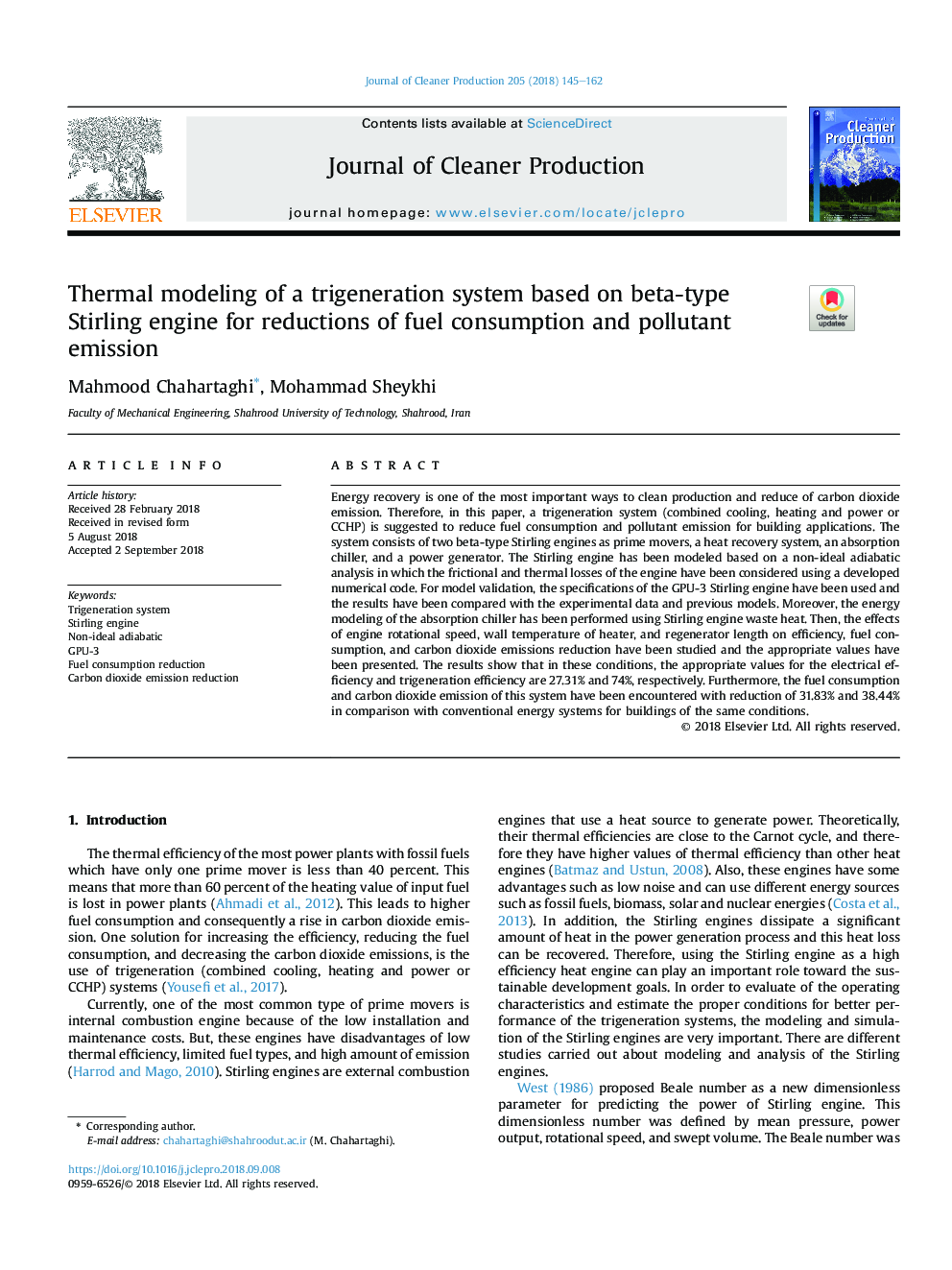| Article ID | Journal | Published Year | Pages | File Type |
|---|---|---|---|---|
| 10156283 | Journal of Cleaner Production | 2018 | 18 Pages |
Abstract
Energy recovery is one of the most important ways to clean production and reduce of carbon dioxide emission. Therefore, in this paper, a trigeneration system (combined cooling, heating and power or CCHP) is suggested to reduce fuel consumption and pollutant emission for building applications. The system consists of two beta-type Stirling engines as prime movers, a heat recovery system, an absorption chiller, and a power generator. The Stirling engine has been modeled based on a non-ideal adiabatic analysis in which the frictional and thermal losses of the engine have been considered using a developed numerical code. For model validation, the specifications of the GPU-3 Stirling engine have been used and the results have been compared with the experimental data and previous models. Moreover, the energy modeling of the absorption chiller has been performed using Stirling engine waste heat. Then, the effects of engine rotational speed, wall temperature of heater, and regenerator length on efficiency, fuel consumption, and carbon dioxide emissions reduction have been studied and the appropriate values have been presented. The results show that in these conditions, the appropriate values for the electrical efficiency and trigeneration efficiency are 27.31% and 74%, respectively. Furthermore, the fuel consumption and carbon dioxide emission of this system have been encountered with reduction of 31.83% and 38.44% in comparison with conventional energy systems for buildings of the same conditions.
Keywords
Related Topics
Physical Sciences and Engineering
Energy
Renewable Energy, Sustainability and the Environment
Authors
Mahmood Chahartaghi, Mohammad Sheykhi,
